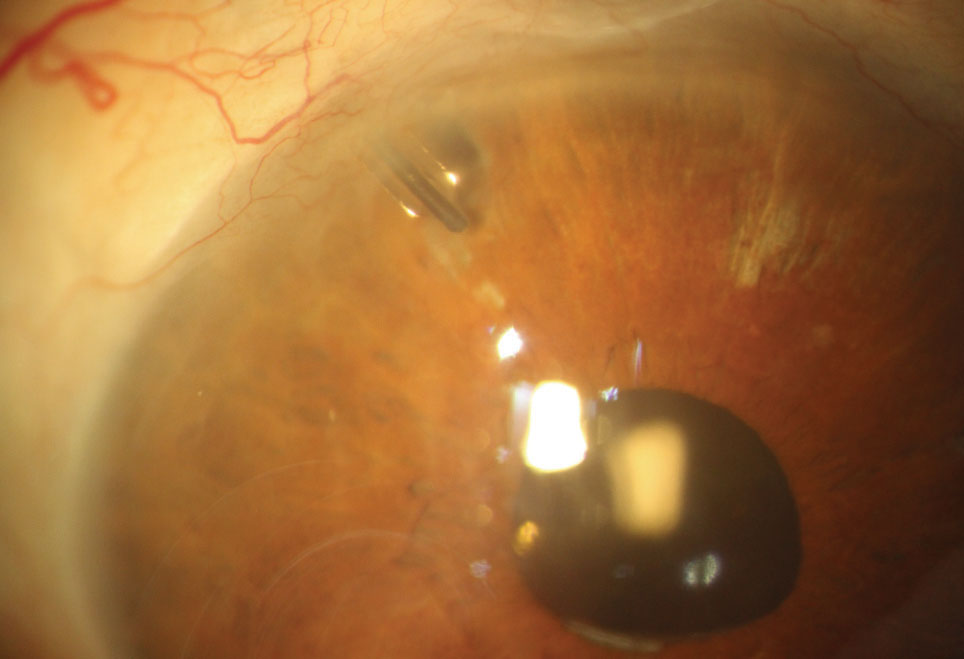 |
While around half of glaucoma eyes in this study maintained IOP control 10 years after tube shunt placement, the same number of eyes failed. Photo: Justin Schweitzer, OD. Click image to enlarge. |
Glaucoma treatments have evolved over the years to include more surgical innovations—primarily trabeculectomy—though a growing number of clinicians have been turning to tube shunt surgery to treat advancing disease in the absence of cataract. Most glaucoma patients are in their early to mid-60s at the time of diagnosis, and with the life expectancy in the United States hovering just below 80 years, there’s a clear need for studies on the long-term outcomes of various glaucoma procedures.
Because tube shunt surgery is becoming a more popular intervention, researchers recently evaluated its 10-year outcomes using retrospective data from a cohort of glaucoma patients at Wills Eye Hospital who underwent the procedure and followed up for at least a decade. Their study included 85 eyes of 78 patients who received the surgery, along with a comparison group of 89 eyes. The procedure was considered to have failed if one of the following events occurred during follow-up: reoperation was needed to lower intraocular pressure (IOP), IOP was greater than 80% of baseline for two consecutive visits or the patient progressed to no light perception.
Of all the tube shunts placed, 60% were valved, 29% were non-valved and 11 were unknown. The mean follow-up period was 11.9 years. At the last visit, the mean IOP of the cohort was reduced from 29.2mm Hg on an average of 3.1 medications to 12.6mm Hg on 2.2 medications.
The treatment success rate among the cohort was 37% at five years and 49.4% at 10 years after tube shunt surgery. More than half of the eyes failed (54%); roughly one in three required additional glaucoma surgery, one in six failed based on increasing IOP and one in 10 progressed to no light perception. Forty percent also required tube shunt revisions.
Regarding visual outcomes at 10 years, patients’ best-corrected visual acuity worsened from 20/125 to 20/500 from the first to last visit, and 40% lost five or more lines of visual acuity. The average visual field mean deviation was -13.9dB at baseline and -17.0dB at the end of follow-up.
“With an approximate failure rate of 50% at 10 years, this study’s rate of failure is similar to those reported in studies with shorter follow-up,” the researchers pointed out in their paper, published in AJO. “The Tube Versus Trabeculectomy study reports a failure rate in tube shunts of about 5% per year (3.9% at one year, 15.1% at three years and 29.8% at five years) with sustained IOP reduction for up to five years,” which the present study’s findings corroborate, the authors noted.
They concluded that while tube shunt surgery effectively maintains IOP control in about half of patients at 10 years, it’s important to recognize that the majority will still experience subsequent vision loss, and the need for additional surgeries is common.
Myers JS, Lamrani R, Hallaj S, et al. 10-year clinical outcomes of tube shunt surgery at a tertiary care center. Am J Ophthalmol. April 16, 2023. [Epub ahead of print]. |

